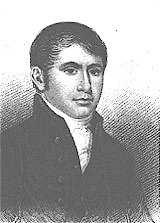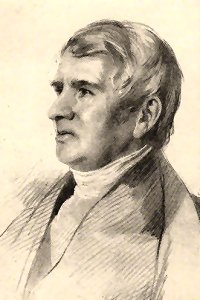Introduction

Born: January 31, 1784, Carlisle, Cumberland, England.
Died: February 19, 1849, Woodbridge, Suffolk, England.
Buried: Quaker Burial Ground, Woodbridge, Suffolk, England.


Born: January 31, 1784, Carlisle, Cumberland, England.
Died: February 19, 1849, Woodbridge, Suffolk, England.
Buried: Quaker Burial Ground, Woodbridge, Suffolk, England.

Barton was Britain’s counterpart to American John Greenleaf Whittier. Like Whittier, he was called the Quaker Poet.
Barton attended a Quaker school in Ipswich. In 1798, he was apprenticed to a Mr. S. Jesup, a shopkeeper at Halstead, Essex, with whom he stayed until 1806.
Barton then moved to Woodbridge, Suffolk, and entered into business with his brother as a coal and corn merchant.
He married, but his wife died after only a year. Barton then moved to Liverpool for a short while, but returned to Woodbridge in 1810.
A bank clerk by profession, he wrote 10 books of poems, many of which became hymns.
Hast thou heard of a statue, erected of yore,
Of whose musical murmurs such marvels are told,
As Philosophy now, counts but fabulous lore,
Though trusted as truth by the simple of old.
For ’twas said, and believed—in the silence of night
It was mute as the landscape around it that lay;
But awoke at the touch of glad morning’s first light,
And with harmony greeted the herald of day.
Be it fiction alone! yet a truth it may teach,
And one which too many have need to be taught,
Could the emblem’s true essence availingly reach
To the inmost recesses of feeling and thought.
Thus the dark heart of man, in its fallen estate,
Bewildered by error, of passion the slave,
To all that is glorious, or god-like, or great,
Is cold as that statue, and still as the grave.
But if on it the bright Sun of righteousness shine,
With light and with life far surpassing the day’s,
Enkindled at once, by that radiance Divine,
It is vocal with joy, and thanksgiving, and praise.
Adapted from Bernard Barton
Household Verses, 1845
The Colossi of Memnon, two statues of pharaoh Amenhotep III, near Luxor, Egypt, were dubbed in antiquity as the Memnonium,
after the Greek hero Memnon, who died at Troy. In his Geography, Greek historian Strabo (65–23 BC), claimed that after partial collapse in an earthquake, one of the statues began making music-like sounds each dawn.